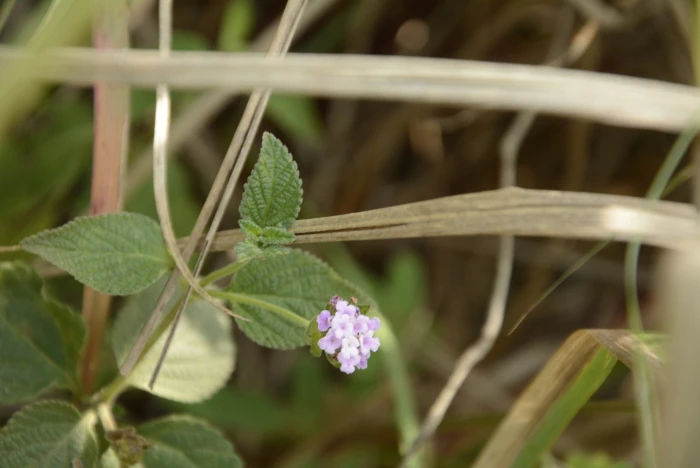Indian Lantana
(Lantana indica)
Indian Lantana (Lantana indica)
/
/

© Siddarth Machado
CC BY 4.0
Image By:
© Siddarth Machado
Recorded By:
Copyright:
CC BY 4.0
Copyright Notice:
Photo by: © Siddarth Machado | License Type: CC BY 4.0 | License URL: http://creativecommons.org/licenses/by/4.0/ | Uploader: siddarthmachado | Publisher: iNaturalist |



















Estimated Native Range
Climate Requirements for Oak Creek, Wisconsin
| This Plant | Your Site | Plant Suitability for Your Location | ||
|---|---|---|---|---|
| • Precipitation | 23" - 90" | 33" | You should be able to grow this plant with no additional irrigation. | Excellent |
| • High Temp. | 85°F - 104°F | 81°F | OK, but your summers are milder than normal for this plant | OK |
| • Low Temp. | 37°F - 73°F | 12°F | Your winter temperatures may be too cold for this plant | Too cold |
This plant may not grow well at your location - your winters are too cold.
Summary
Lantana indica, commonly known as Indian Lantana or Wild Sage, is a perennial shrub native to the Indian subcontinent and Southeast Asia, typically found in tropical and subtropical environments such as forest margins, scrublands, and disturbed areas including roadsides. It is a fast-growing plant that reaches a height of 2-6 feet (0.6-1.8 meters) and a width of 2-5 feet (0.6-1.5 meters). The shrub has a sprawling form with rough, pointed leaves and clusters of tubular flowers that are most often yellow, orange, pink, or red, blooming profusely in the summer and fall. The flowers are highly attractive to butterflies and other pollinators.
Indian Lantana is valued for its vibrant, multicolored flowers and ability to attract wildlife. It is used in gardens for border planting, as ground cover, or in butterfly gardens. It thrives in full sun to part shade and prefers medium to fast-draining soils such as clay, loam, or sand. While it is drought-tolerant, occasional watering will promote more lush growth. However, Lantana indica can be invasive outside its native range, often outcompeting native flora, so it is crucial to check local regulations before planting. It is also resistant to most pests and diseases but can be prone to root rot in poorly drained soils.CC BY-SA 4.0
Indian Lantana is valued for its vibrant, multicolored flowers and ability to attract wildlife. It is used in gardens for border planting, as ground cover, or in butterfly gardens. It thrives in full sun to part shade and prefers medium to fast-draining soils such as clay, loam, or sand. While it is drought-tolerant, occasional watering will promote more lush growth. However, Lantana indica can be invasive outside its native range, often outcompeting native flora, so it is crucial to check local regulations before planting. It is also resistant to most pests and diseases but can be prone to root rot in poorly drained soils.CC BY-SA 4.0
Plant Description
- Plant Type: Shrub
- Height: 2-6 feet
- Width: 2-5 feet
- Growth Rate: Rapid
- Flower Color: Yellow, Orange, Pink, Red
- Flowering Season: Summer, Fall
- Leaf Retention: Evergreen
Growth Requirements
- Sun: Full Sun, Part Shade
- Water: Low
- Drainage: Medium, Fast
Common Uses
Border Plant, Butterfly Garden, Drought Tolerant, Groundcover, Low Maintenance, Showy Flowers
Natural Habitat
Native to the Indian subcontinent and Southeast Asia, typically found in tropical and subtropical environments such as forest margins, scrublands, and disturbed areas including roadsides
Other Names
Common Names: Wild Sage
Scientific Names: Lantana indica, Lantana collina, Lantana latifolia, Lantana rubra, Lantana scabra
GBIF Accepted Name: Lantana indica